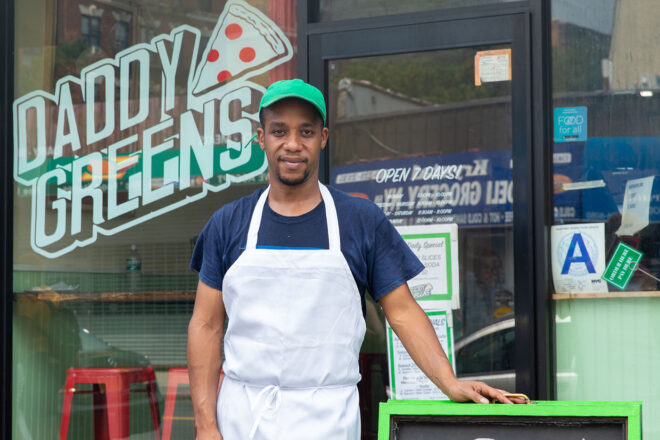COVID Impact on Industry: Lodging & Recreation
Editorial Team
6 min read
Part 2 of our “COVID Impact on Industry” series focuses on Lodging & Recreation, two subsets of the hospitality industry. We take take a look at how hotels and entertainment venues fared in 2020, and what the road forward looks like in 2021.
How Covid-19 has affected lodging and recreation
The sharp decline of business and leisure travel has dramatically impacted lodging and recreation, in addition to the detrimental effects on other aspects of the hospitality industry. This decrease left many formerly packed hotels struggling with troublingly low occupancy. Travel spending, in general, was down 42% in 2020 compared to 2019, according to the US Travel Association. Less travel translates to a reduced need for accommodations and entertainment—causing a dip for both the lodging and recreation sectors.
Hotel occupancy was down by 32% as of October 2020, according to Forbes. The American Hotel and Lodging Association, an industry trade group, estimated that by September 2020, American hotels had lost over 870,000 jobs, more than a third of their workforce.
Impact on Lodging
In September, The Financial Times reported that The Standard hotel in New York City, which had formerly relied on business travelers to occupy its rooms and frequent its hipster-friendly bars and restaurants, saw its bookings virtually evaporate overnight. Business travel-related bookings had dropped, and the hotel was down to 10-20% occupancy on weeknights. Since the beginning of the pandemic, more than 1,000 bars and restaurants in New York have closed. If hotels solve the problem of “where to stay” for business travelers, recreation answers the question “What do I do with my free time?” Along the same lines, if hotel bookings plummet, the attendant impact on the restaurants and entertainment venues in their vicinity is not insignificant. Lodging and recreation are closely related.
Impact on Recreation
Recreation encompasses anything people might do for rest, relaxation, or enjoyment—barring food and beverage, which is related but has its own category. Recreation includes businesses in entertainment (theaters, movie theaters, concert venues, etc), sporting venues (both spectator and participatory), and places of special interest (zoos, museums, cultural centers, etc).
Prior to 2020, many business travelers had gotten in the habit of tacking a few days onto the beginning or end of their business trips, a trend known as “bleisure travel.” Travelers often made choices according to convenience, choosing a location that was close to their business destination. According to a 2018 report from Expedia Group, 67% of bleisure trips took place in the same destination as a person’s business travel. But business travel saw the sharpest decline of all travel types last year with a 54% decrease, according to the report “Business Travel – Global Market Trajectory & Analytics.”
Typically, when hotels and other lodging & accommodations establishments see a decline, related recreation businesses are negatively impacted as well. The coronavirus effects on lodging and recreation illustrate how interwoven the ecosystem of the hospitality industry is. The negative effects on travel and tourism—most notably the decline in air travel—have directly impacted other sectors. McKinsey reports that by April of 2020, U.S. airline capacity declined by about 70% compared to the same period in 2020. This drop was far greater than the dip in travel after September 11, 2001, or the 2008-09 recession.
If that weren’t enough, the recreation sector has been forced to contend with another enormous challenge: forced closures. Due to safety concerns, many theaters have been forced to close their doors for much of the pandemic. Music venues have temporarily or permanently closed. Part of what makes recreation so appealing is that it is, by its very nature, “non-essential.”
How savvy businesses adapted
Nearby destinations, those located within a one-day driving distance, have spiked in popularity due to a combination of travelers’ wariness over the safety of long-distance travel combined with feeling stir-crazy after months of being cooped up in their homes. Many savvy hotels have adapted by catering to these “staycation” travelers. While The Standard in New York is still struggling to overcome the drop in business-travel bookings, New Yorkers looking for a break from their own homes have flocked to the hotel on weekends.
That’s not the only way the lodging industry has adapted to this sudden shift in business. More people than ever before are working from home, and not all of them have ideal home office setups or living situations that are conducive to an eight-hour period of uninterrupted focus. To help offset the decline in business travel, a growing list of hotels have begun to rent hotel rooms as remote office rentals.
Movie theaters, which have struggled with safety concerns over indoor screenings, adapted during the warmer months by offering pop-up drive-in screenings. As of October 2019, only 305 drive-ins were in operation in the U.S. In 2020, we saw a revitalization of those businesses as well as indoor theaters getting in on this socially distanced way to watch movies.
Other businesses took their offerings online. There are a plethora of stage shows, musicals, and operas that can now be streamed online. Most venues maintained an element of that in-person magic through appointment viewing for streamed shows. These efforts broadened their geographic audiences. Suddenly, viewers in Des Moines could stream shows from Broadway in the comfort and safety of their own homes. In addition to bolstering the state of the hospitality industry, this has the added benefit of continuing or igniting a desire for travel, motivating travelers to visit these businesses in real life once they feel it’s safe to do so.
The future of lodging and recreation: 2021 and beyond
Travelers have become increasingly willing to travel, regardless of vaccination status. This is good news for lodging and recreation in 2021; we may see some return to normalcy before the vaccine rollout is complete.
“Nearby” destinations will likely continue to be popular, according to McKinsey. We can expect to see the hotel industry continue to cater to a more regional clientele in the near future. Travelers in the Southeast may be more likely to visit Miami, for example, while those in the Great Lakes area might choose a weekend getaway to Michigan or Wisconsin.
Another McKinsey report on business travel gives us some idea of which aspects of business travel will return first, allowing the hospitality to plan more proactively for these changes. In-person sales meetings are predicted as the first to return, along with essential business operations. Next, we can anticipate the return of domestic air travel for internal meetings, training programs, and other small-group gatherings. International travel and large group-related travel (like trade shows and industry conferences) will likely be the last to return.
The road to recovery for the hospitality industry will be a long one. Some predict that certain aspects of travel may be gone for good, but one reassuring estimate predicts that business travel will recover to nearly $829.5 billion by 2027. Until then, we can hope that President Biden’s assurance that a vaccine will be available to “every adult American” by the end of May will mean good things for lodging and recreation in the second half of 2021.
………
Enjoyed this article? Check out the rest of our COVID Impact on Industry series:
Related Posts
Spotlight on Daddy Greens
PYMNTS: Small businesses turn to platforms to simplify payment operations
Popular Topics
Stay in touch
Sign up and learn more about Clover.
Thank you for your subscription!
More posts about starting a small business
eBook





